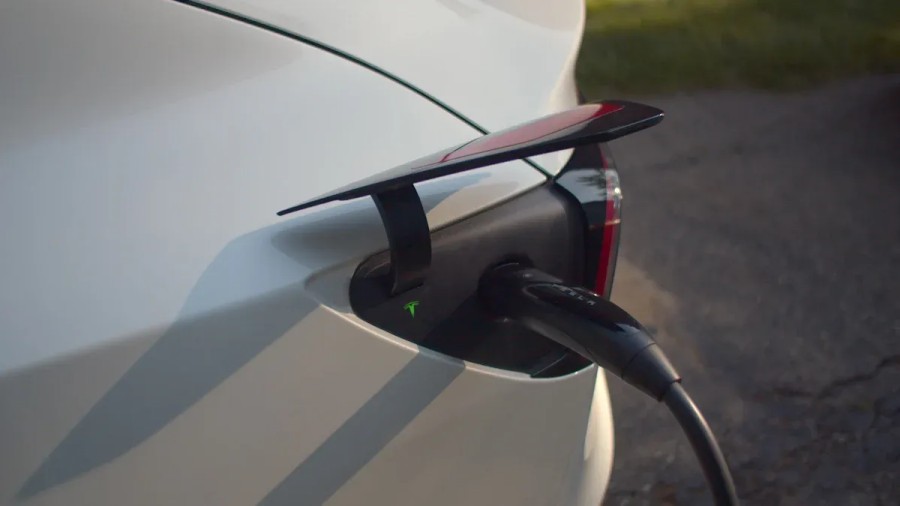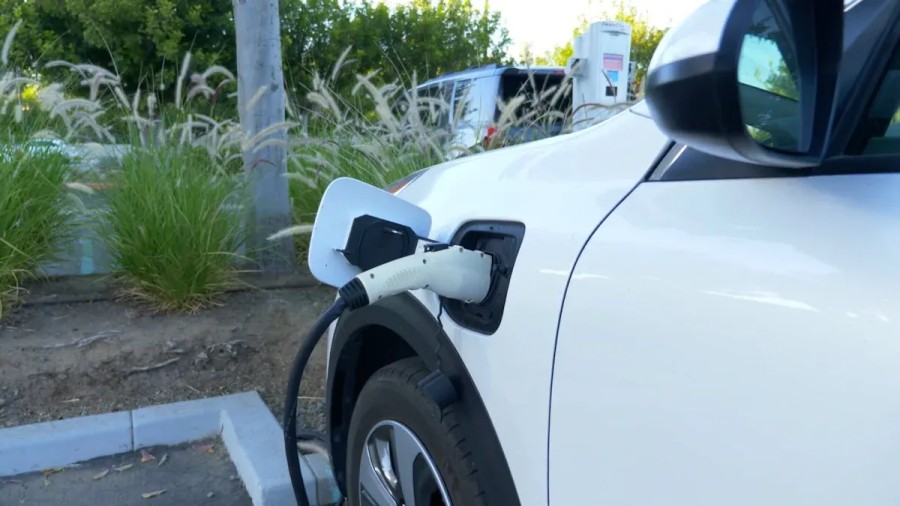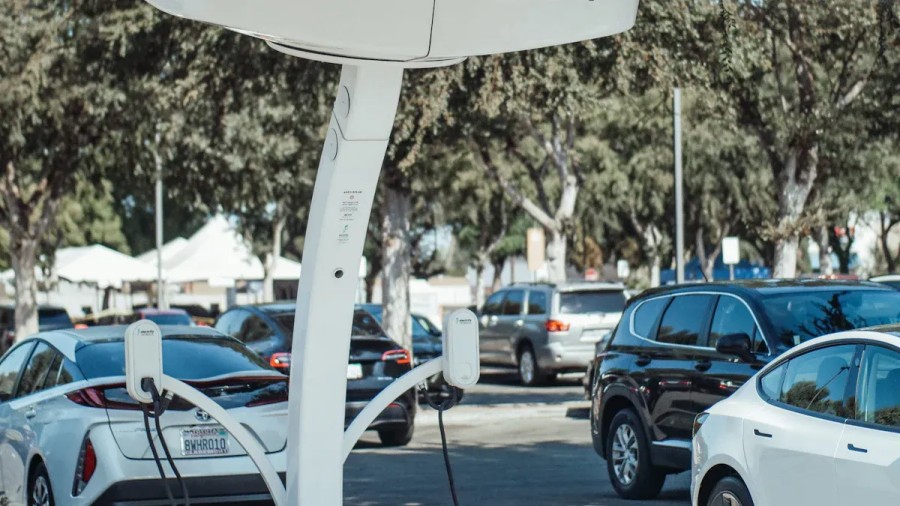The North American Charging Standard (NACS) is changing EV charging. Its simple design and faster charging make it very popular. Over 30,000 new chargers are being added soon. NACS users can already use over 161,000 public stations. This includes 1,803 Tesla Supercharger locations. Almost 98% of new EVs now work with NACS. It is quickly becoming the main charging system in North America. Automakers, leaders, and operators must work together. This teamwork helps make charging easy and available for all EV drivers.
Key Takeaways
- NACS is becoming the main EV charging system in North America. There are over 161,000 public stations available.
- The NACS plug is smaller and simple to use. This makes charging easy for everyone, no matter their age.
- NACS charges electric cars faster. This means less waiting and easier long trips using Tesla’s big Supercharger network.
- Automakers, charging companies, and the government must work together. This teamwork will help solve problems and grow NACS use.
- Switching to NACS will make charging electric cars easier. This will help more people choose electric vehicles.
Understanding the North American Charging Standard (NACS)
NACS vs. CCS and CHAdeMO
The North American Charging Standard (NACS) is changing EV charging. It is smaller and works better than CCS or CHAdeMO. NACS uses the same pins for AC and DC charging. This makes the connector smaller but still very useful. Its simple design makes charging easier for everyone.
NACS also charges EVs quickly. CCS can go up to 350 kW, but NACS reaches 250 kW. Both can charge an EV to 80% in less than 30 minutes. The speed depends on your car’s charging ability. Tesla’s Supercharger network, which uses NACS, is more reliable and easier to find than CCS or CHAdeMO.
| Charging Standard | Max Power Output | Voltage Limit | Charging Speed (0-80%) |
|---|---|---|---|
| NACS | 250 kW | 500 volts | Under 30 minutes |
| CCS | 350 kW | 1,000 volts | Under 30 minutes |
Key Parts of NACS Technology
The NACS connector is safe and easy to use. It locks securely with a bayonet-style mechanism during charging. It supports AC charging (up to 277 volts) and DC charging (up to 500 volts). This makes it useful for many charging needs.
Important parts include:
- Two big pins for power transfer.
- A ground pin for safety.
- Two control pins for communication between the car and charger.
The ODU TURNTAC design makes the connector last longer. Its shape makes plugging in and unplugging easy, even in tough conditions. This design works well at home or on the road.
How NACS Charging Works
NACS charging is simple and fast. First, open your EV’s charging port. Then, plug in the connector. The system checks if it’s safe to charge with AC or DC power.
| Step | What Happens |
|---|---|
| Starting the session | Open the EV charging port easily. |
| Plugging in the connector | Connect it to start a safety check for AC or DC charging. |
| Watching and stopping | Check progress and safely stop charging when done. |
You can watch the charging progress and unplug safely when finished. This easy process makes NACS a great choice for EV drivers who want a simple experience.
Advantages of NACS in the EV Charging Industry
Small Design and Easy-to-Use Features
NACS is known for its small and simple design. Its smaller plug is easier to use than CCS or CHAdeMO. This design saves space and makes charging simpler. It’s easy for drivers of all ages to use.
The connector locks securely with a bayonet-style mechanism. You can plug it in easily, even in bad weather. Its strong design lasts longer and reduces damage. These features make NACS great for home and public charging.
Faster Charging and Less Waiting
NACS charges EVs faster, so you wait less. Tesla’s Superchargers, using NACS, make up 62% of fast chargers in the U.S. With about 20,000 Superchargers, you can charge quickly and keep driving. This network gives you reliable charging wherever you go.
Charging time is less of a problem now. In 2022, it was a big issue, but by 2025, it became less important. NACS and other improvements are solving this challenge. Electric delivery vans also have less downtime than diesel ones, helping businesses work better.
Works with Many EVs and Helps the Grid
NACS works with many EVs, making it widely useful. It uses the ISO 15118 protocol to connect with CCS vehicles. This makes it easier to find chargers for any EV model.
NACS also helps the power grid. It communicates well with the grid to manage energy use. This supports more EVs on the road and helps create a greener energy system.
Tesla’s Large Charging Network and Dependability
Tesla’s charging network is one of the best today. It has over 20,000 Superchargers across North America. These chargers are placed to help you travel far without stress. The network is built for ease and great performance, making EV driving simple.
Tesla Superchargers are ranked second among charging networks. They scored 649 overall and 484 for Charging Location Experience. This shows how much they care about user happiness. Features like auto-pay and easy plug-in make charging simple. You don’t need apps or cards—just connect and charge. Fast charging saves time and gets you back on the road quickly.
The North American Charging Standard (NACS) helps Tesla’s network stay reliable. Its small size and smart design keep it working well. But right now, non-Tesla EVs can’t use the network much. As more carmakers use NACS, this could change. It may soon be open to more EV drivers.
Tesla focuses on new ideas and growing its network. This sets a high standard for the EV world. Their reliable and easy-to-use chargers help more people choose electric cars. For you, this means fewer problems and a better EV experience.
Challenges in Adopting NACS
High Costs for Building and Upgrading
Switching to NACS is expensive. Building new charging stations costs a lot. For example, a 350 kW NACS station can cost $140,000. This makes it hard to quickly add more chargers. Upgrading old chargers to NACS is cheaper, costing $200 to $500 each. But even this needs careful planning and money.
Many people still can’t find enough charging stations. This is a big problem for those in apartments without home chargers. Without enough public chargers, people may not want to buy EVs. Worrying about running out of power, called range anxiety, makes things worse. Fixing these problems is key to making EVs work for everyone.
Changing Supply Chains for NACS Parts
Switching to NACS means automakers must change how they make cars. They need to stop using CCS parts and start using NACS ones. This requires redesigning factories and finding new materials. Most carmakers aim to finish this by 2025.
| Evidence Description | Key Points |
|---|---|
| Major OEMs adopting NACS | Automakers must switch from CCS to NACS, with big changes by 2025. |
| Infrastructure costs | New 350 kW NACS stations cost about $140,000 each. |
| Retrofitting costs | Upgrading old chargers to NACS costs $200 to $500 per charger. |
These changes may slow down how fast new chargers are added. Delays in getting NACS parts could leave fewer chargers available for a while. This might make it harder for drivers to find places to charge during the transition.
Testing and Setting Standards
For NACS to be used everywhere, it must pass strict tests. Experts check if it’s safe and works well. These reviews help automakers, charger operators, and drivers trust the system.
Making NACS a standard also needs teamwork. Automakers, leaders, and policymakers must agree on rules and designs. This takes time but is important for a smooth charging experience. Without this, the industry could become messy, slowing down NACS adoption.
Design Challenges for Non-Tesla EVs
Switching to the North American Charging Standard (NACS) is tricky for non-Tesla EVs. While NACS has many advantages, its design can cause problems for automakers and drivers.
One big issue is relying on Tesla’s system. If you drive a non-Tesla EV, you need the Tesla app to use NACS chargers. This raises privacy worries since Tesla collects user data through the app. Some people may feel uneasy about sharing their information.
Tesla also has strict rules for automakers using NACS. There are about 40 technical requirements that must be followed. These rules make it harder for automakers to switch from CCS to NACS. This could delay the release of compatible cars and chargers.
Adapters create another problem. They help non-Tesla EVs connect to NACS chargers but can lower charging efficiency. Adapters might slow charging by increasing resistance and could cause safety issues. This means longer waits at charging stations for drivers.
| Evidence Description | Key Points |
|---|---|
| Need for Tesla App | Non-Tesla EV drivers must use Tesla’s app, raising privacy concerns. |
| Strict Technical Requirements | Tesla requires about 40 rules for NACS integration in vehicles. |
| Adapter Problems | Adapters may slow charging and cause safety risks. |
These challenges show the importance of teamwork between Tesla, automakers, and charging companies. Solving these problems will make NACS easier for all EV drivers to use.
The Role of Stakeholders in NACS Adoption
Automakers and Their Plans for NACS
Car makers are key to NACS adoption. Many have shared plans to add NACS to their vehicles. This will let their cars use Tesla’s large charging network. It makes charging easier and helps create one standard for everyone.
| Automaker | Announcement Date | Details |
|---|---|---|
| Aptera | November 2022 | Shared plans to use NACS. |
| Ford | May 2023 | Will add NACS and payment via FordPass app by 2025. |
| General Motors | June 2023 | EVs will have NACS ports from the factory by 2025. |
| Rivian | June 2023 | EVs will have NACS ports from the factory by 2025. |
| Volvo | June 2023 | EVs will have NACS ports from the factory by 2025. |
| Polestar | June 2023 | EVs will have NACS ports from the factory by 2025. |
| Tesla | March 2023 | Testing “Magic Dock” for both NACS and CCS1. |
| SAE International | June 27, 2023 | Announced plans to make NACS a standard. |
Car makers are also teaming up with charging companies. These partnerships help build more NACS chargers. This makes owning an EV easier for you.
Government Policies and Support for NACS
Government rules and funding help NACS grow. Federal and state programs give money and set rules for EV chargers. For example, the Bipartisan Infrastructure Law gave $7.5 billion to improve EV charging across the U.S. States like California and New York have their own plans to make charging better.
| State | Policy or Program |
|---|---|
| California | Plug & Charge: New fast chargers must support easy, automatic payments. |
| Uptime Rules: Public chargers must work 97% of the time. | |
| Bidirectional Charging: Looking into rules for EVs to send power back to the grid. | |
| New York | Make-Ready Programs: Helps businesses prepare for future EV chargers. |
| Public Charging: Funds Level 2 chargers in parking lots. | |
| Colorado | Easier Permits: Speeds up the process to install chargers. |
| Fleet Programs: Gives money to businesses switching to electric vehicles. | |
| Federal | Bipartisan Infrastructure Law (2021): $7.5 billion to grow EV charging nationwide. |
These programs aim to make charging easier and more reliable. They encourage you to think about getting an electric car.
Charging Companies and Building More Stations
Charging companies are important for adding NACS chargers. They are spending money to build new stations and upgrade old ones. These companies work with car makers to make sure NACS fits into their networks. This teamwork creates a smoother charging experience for you.
They are also improving how chargers work. Features like Plug & Charge make charging faster and simpler. These upgrades make drivers happier and help the world move toward cleaner transportation.
Working Together to Solve NACS Challenges
Teamwork is key to fixing problems with NACS adoption. Car makers, charging companies, and energy providers are joining forces. They aim to make charging easier, cheaper, and available for all EV drivers.
A big example is Tesla teaming up with Ford, GM, and Volvo. By working with Electrify America, they improve network compatibility and offer cheaper public charging. This helps you charge your EV easily, no matter the brand.
| Who’s Working Together | What They’re Doing |
|---|---|
| Tesla, Audi, Ford, GM, Volvo, Nissan, Honda, Toyota, BMW, Hyundai, Jaguar, Kia, Lexus, Mercedes-Benz, Mini, Rolls-Royce, Subaru, Rivian | Partnering with Electrify America for better compatibility and cheaper public charging. |
| EvGo | Teaming up with Uber, Lyft, and GM to lower costs and expand access. |
| ChargePoint and Mercedes-Benz USA | Making charging simple for EV drivers. |
| BP and Tesla | BP spending $100M to buy Tesla fast chargers for its network. |
| Shell | Running a large U.S. charging network with 140,000 ports and access to 300,000 more. |
Charging companies like EvGo and ChargePoint are helping too. EvGo works with Uber and Lyft to offer lower prices and more NACS chargers. ChargePoint partners with Mercedes-Benz USA to make charging easier for drivers like you.
Energy companies are also investing heavily. BP spent $100 million to buy Tesla fast chargers for its BP pulse network. Shell, with 140,000 charging ports, is expanding public charging options.
These partnerships show how the industry is solving NACS challenges. By working together, they are building a better and more reliable EV charging future.
The Future of NACS and Its Potential as an Industry Standard
NACS and CCS Will Work Together for Now
For now, NACS and CCS will both be used for EV charging. Tesla is adding CCS chargers to its stations to help this transition. This shows that both systems will work side by side for a while. CCS is still widely used, so switching fully to NACS will take time. Both standards will likely serve different groups of drivers during this period.
NACS and CCS are still competing. NACS is growing in North America, but CCS is more common in Europe. The EV charging market was worth $3.15 billion in 2022 and is expected to grow. This growth means there’s room for both systems for now. Automakers and drivers can choose the one that fits their needs.
Why One Standard Helps EV Drivers
Having one charging system makes things easier for drivers. You won’t have to worry about chargers that don’t match your car. Companies like Ford and GM are starting to use NACS, showing a move toward one standard. Many people are waiting to buy EVs until NACS ports are available. This shows how important one system is for making EVs more popular.
One standard also helps build more charging stations. Companies can focus on growing networks without worrying about different systems. For you, this means more places to charge and less stress about running out of power. It makes owning an EV simpler and more convenient.
Working Together to Make NACS Universal
Making NACS the main system needs teamwork. Automakers, charging companies, and leaders must work together. Tesla is teaming up with Ford and Volvo to add more NACS chargers. They are also solving problems like making NACS work with non-Tesla cars.
Government programs are helping too. Laws like the Bipartisan Infrastructure Law give money and set rules for adding NACS chargers. By working together, everyone can solve issues like high costs and supply chain changes. This teamwork will help create a better charging system for all.
Switching to NACS will take time, but it will be worth it. For you, this means easier charging and fewer problems. Working together ensures the change is fair and helpful for everyone.
The North American Charging Standard (NACS) is changing EV charging. It charges faster, works with many cars, and uses Tesla’s strong network. Studies show EV chargers bring more people to stores. They also help businesses earn more money and attract customers.
But there are challenges like high costs and setting standards. Automakers, leaders, and charging companies must work together to solve these problems.
The future of EV charging is promising. With NACS leading the way, charging will be easier and support more electric cars.
FAQ
What makes NACS special compared to other chargers?
NACS is smaller, charges faster, and works with Tesla’s big network. Unlike CCS or CHAdeMO, it uses the same pins for AC and DC power. This makes charging easier, reliable, and efficient for drivers.
Can non-Tesla cars use NACS chargers?
Yes, but they need adapters or updated ports. Tesla is helping carmakers make NACS easier to use. As more brands switch to NACS, charging non-Tesla cars will get simpler without extra tools.
How does NACS make charging better?
NACS has an easy-to-use plug and charges quickly. Tesla’s Plug & Charge feature means no apps or cards are needed. Just plug in, and it starts charging, making it simple and stress-free.
Are NACS chargers everywhere?
NACS chargers are growing fast across North America. Tesla’s Supercharger network already supports NACS, and more stations are adding it. With help from automakers and governments, chargers will soon be easier to find.
Does NACS work with future EV tech?
Yes, NACS supports new features like two-way charging and grid use. Its design works with future technologies, keeping your EV ready for upcoming energy and charging advancements.
Post time: Apr-08-2025



